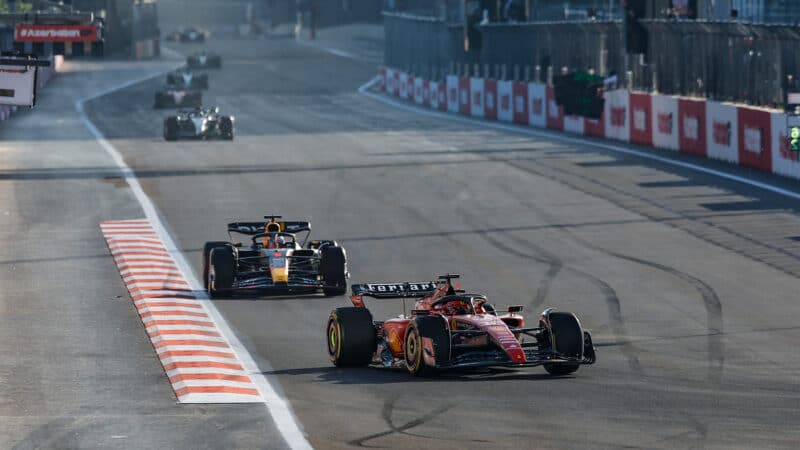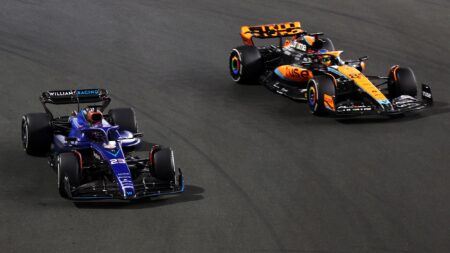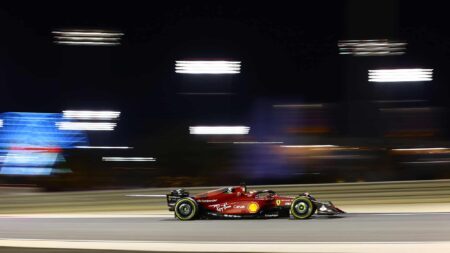As the manufacturers have begun developing these power units at least some are finding that not only is the split looking more like 56/44 in favour of the ICE, but of more concern is that the engine cannot adequately supply such a big capacity battery with enough charge over some of the longer laps on the calendar.
At the current level of technology we are looking at power units with a total of around 1100bhp or 800Kw (split 450Kw/350Kw between engine and battery) which will suddenly be bereft of the battery’s 350kw contribution somewhere on the lap. It raises the prospect of hazardously big speed differentials as one car empties its charge for the lap and the other does not, but there are other implications too, as Verstappen elucidated after trying the ’26 PU on the simulator.
“If you go flat out on the straight at Monza,” he says, “at around four or five hundred metres before the end of the straight, you have to downshift flat out because that’s faster.” At that point the battery has run out of its energy allocation for the lap and in the absence of the torque it provides you need the downshift to get the ICE’s revs to compensate. “I think that’s not the way forward,” says Max. “But of course, probably that’s one of the worst tracks.”
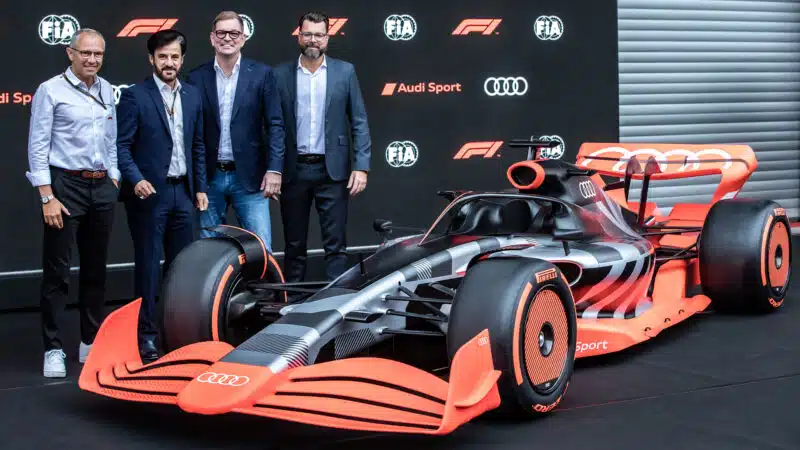
The 2026 regulation changes were a main motivator in Audi choosing to join the grid – aiming to be a competitive works team almost immediately
Getty Images
But complicating the picture further are the active aerodynamics. The wing level will be software-controlled actively and so as the battery empties itself, the aero will also compensate, trimming wing level. “It means the cars will probably have a lot less drag,” continues Verstappen, “so it will be even harder to overtake on the straight.
“You can’t control the active aerodynamics; the system will control it for you. Which then I think makes it very awkward to drive, because I prefer to control it myself. When you’re behind someone, maybe you need more front or more rear [to make the pass], these kinds of things. But if the system starts to control that for you, I don’t think that’s the right way forward.”
“Perhaps where we need to pay urgent attention before it’s too late,” said Horner last week. “We should look at the ratio between combustion power and electrical power to ensure that we’re not creating a technical Frankenstein which will require the chassis to compensate to such a degree with movable aero and to reduce the drag to such a level that the racing will be affected.”
As he hosted a first look around the new Red Bull Powertrains facility last week, Horner explained further. “It still doesn’t feel too late to tune that ratio,” he said. “It wouldn’t take much. It’s not like you’d have to rip it up and start again, but just a question of whether you do it with the fuel flow or the cell mass. We just need to change that ratio to ensure we get great racing.”
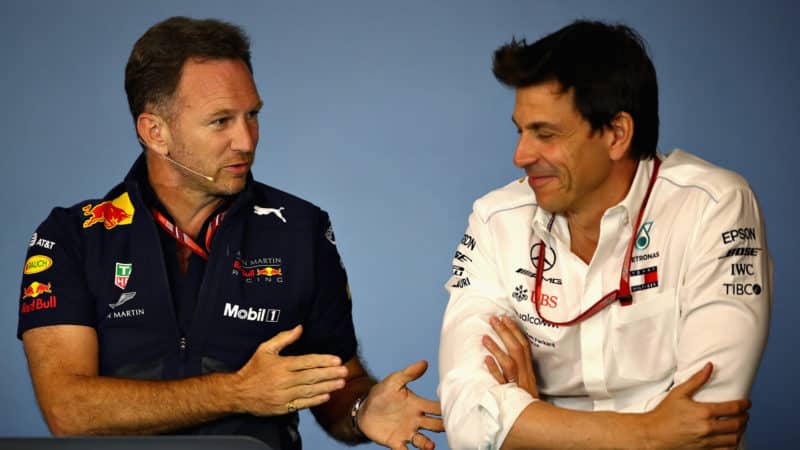
Horner and Wolff are in rare agreement
Getty Images via Red Bull
Toto Wolff last week said that there was “zero possibility” of changing the 2026 PU regulations and questioned what Horner’s motivation was for the suggestion. But that was a reference to scrapping the rules entirely. Which isn’t what Horner is seeking. Technically, it would require only a majority vote to tweak them, not even unanimity.
F1 being the cynical business it is, Horner’s campaign is being read as ‘the newly-created Powertrains must be struggling.’ Having looked around the place, seeing the new facility and the immense expense and effort that’s already been made, seeing the huge design office, staffed with hundreds of people working solely on the ‘26 engine, seen one on the dyno, the programme really doesn’t have the appearance of being behind schedule.
